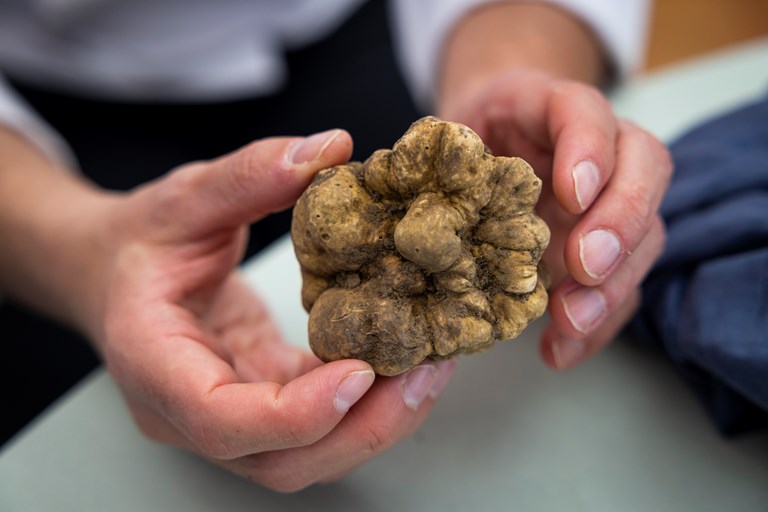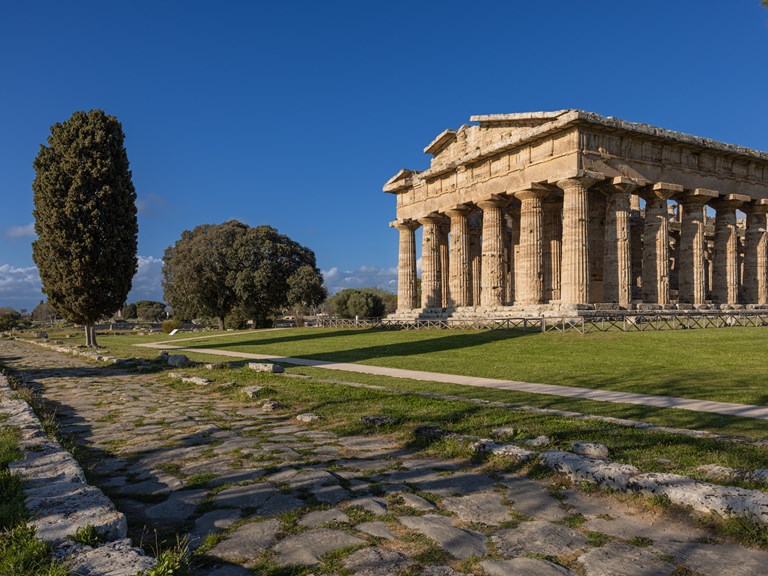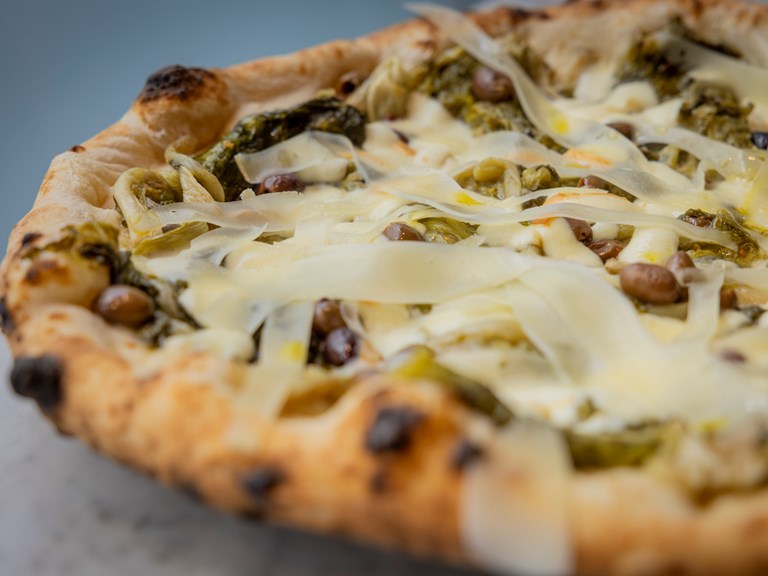A TRUFFLE HUNTER TELLS ALL
25.11.2022 NAPLES & AROUND
After greetings have been exchanged, he opens the lid, reaches inside, and brings out an airtight container. Peeling back the lid, he extracts a blue linen bundle, which he proceeds to unwrap as delicately as if it contained a new-born baby. Instead of a baby, seven white truffles are soon revealed, burnished with the sheen of the red earth they grew in – earth which still clings to their gnarled skin, full of dents and declivities.
“Non male, not bad”, says chef Gennaro, as Gerardo holds up the largest exemplar – a 150-gramme (5oz) beauty – for him to inhale. Even from two metres away, the scent is intense and unmistakable.
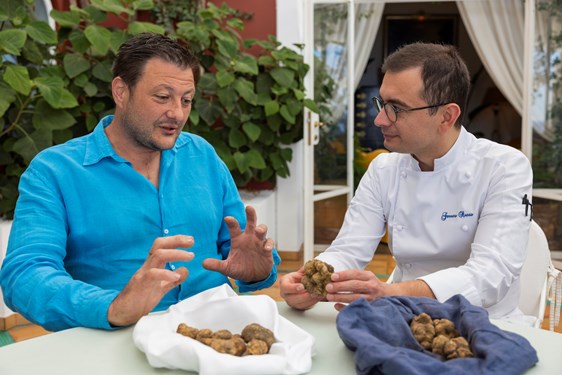
View
Gerardo once had a different job, laying ceramic tiles in bathrooms and kitchens. But even back then, he tells, us, he would spend much of his spare time searching for edible mushrooms in remote spots in the mountains in and around the Sorrentine peninsula. One day he met another forager in a particularly out of the way spot, and they struck up a conversation. The man turned out to be a distant relative. He told Gerardo that mushrooms were fine – but his real passion was truffles. “A light went on inside my head”, Gerardo recounts. “I asked him innocently – ‘So are there truffles around here?’. ‘Come to my car and I’ll show you’, he replied. I went, and he showed me these two lovely truffles he’d found”.
It's unusual for a truffle hunter to strike up conversation, let alone to reveal his haul. But there was an explanation: the distant relative had identified Gerardo as a possible customer for one of the truffle dogs he bred and trained.
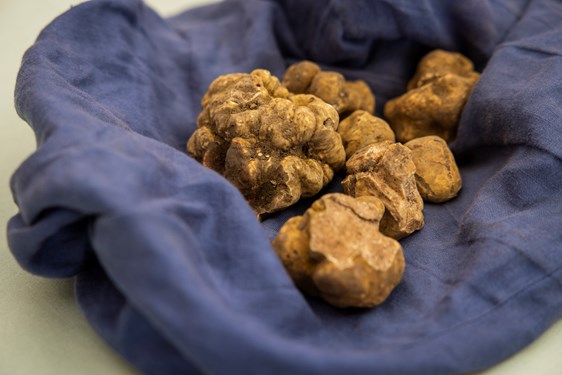
View
There are a few breeds of dog that make good trufflers. In Italy, one of the most common is the Lagotto Romagnolo, a curly-haired, floppy-eared breed, originally from the Po Delta, with an engaging, curly-haired, floppy-eared personality. Gerardo’s contact had a couple of pure-bred Langottos that he wanted to sell, but the wannabe truffle hunter found his prices exorbitant.
However, in the kennels, Gerardo spotted a small, scrawny Lagotto half-breed, which the man let him have for a knock-down price. The next day, he drove up to the woods around Monte Faito above his hometown of Gragnano and, with the help of his new canine helper, “found so many black truffles I didn’t know what to do with them”.
A friend pointed him in the direction of a truffle dealer, who examined Gerardo’s haul with a critical eye and said “Look, the price has gone down recently – I’m afraid I can only give you a thousand euros for them”. Gerardo could hardly stop his jaw dropping open in amazement. Concealing his excitement, he replied “Yeah, sure – that’s fine for me, you’re the one who knows the market”. A week later he was back with another crate of black truffles, which he sold to the same middleman for a higher price. Gerardo soon discovered that he could make a living doing something he loved – being out in the open air, in some of Italy’s most beautiful wilderness areas.
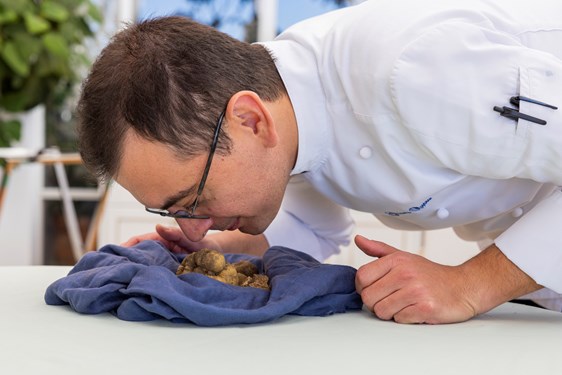
View
The holy grail of truffle hunting is, of course, the prized tartufo bianco, or white truffle. And Gerardo knew that to find good tartufi bianchi, he would have to venture further afield. Cautiously, he began to explore some of the Italian regions where white truffles are known to thrive, due to a favourable combination of climate, soil and the tree varieties that grow there (oak, hazelnut, chestnut and poplar are all good candidates). Exploratory forays took him as far north as Tuscany and Umbria, and all the way down to Calabria in the toe of the Italian boot.
It was here that he found the most promising conditions. White truffles grow abundantly in Calabria, if you know where to look – but there are far fewer tartufai, or truffle hunters, than in areas like Piedmont or Tuscany, where the practice of foraging for the fragrant tubers is rooted deep in the local culture. Northern Calabria is also full of utterly remote wooded areas, miles from the nearest road.
The first thing Gerardo does when he scouts out a new zone is to consult the historical weather records. “Truffles need rain to grow”, he explains, “and it has to fall at the right time of year”. Late fall is the best time to search for tartufi bianchi – but only if it rained abundantly in that area the previous spring. Gerardo has various apps and websites that he uses to pinpoint the most promising stalking grounds, based on the rainfall charts from six or seven months earlier.
When he arrives in a new area for the first time, he moves cautiously. “On my first few visits”, he recounts, “I don’t even take the dog with me. I just walk around, looking for promising spots, in woods that are as untouched as possible. As far as anyone knows, I’m just a regular hiker. That way I get a feel for the territory and I can get a sense of whether there are issues with private property or whether the place is frequented by other tartufai”.
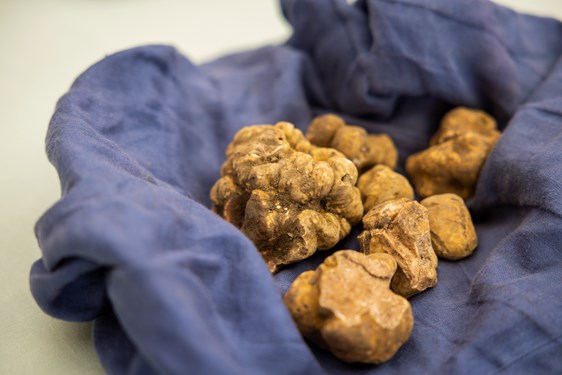
View
The haul he has brought to show us today came from a stand of oaks that was within sight of a busy road – so Gerardo, though excited by the size of the truffles his Lagotto was unearthing, knew not to push his luck by overstaying his welcome. Truffles tend to grow where truffles have grown before – so if the spot remained undiscovered, he could always go back. If he was seen there with his dog, however, the secret would have been out.
Gerardo’s eldest son is a keen mushroom hunter himself – so it could be that he has the makings of a truffle dynasty. But for the time being, he’s just happy that his son is out in the open air rather than playing video games. “What counts most for me right now”, Gerardo states, “is that he’s found a healthy hobby”.
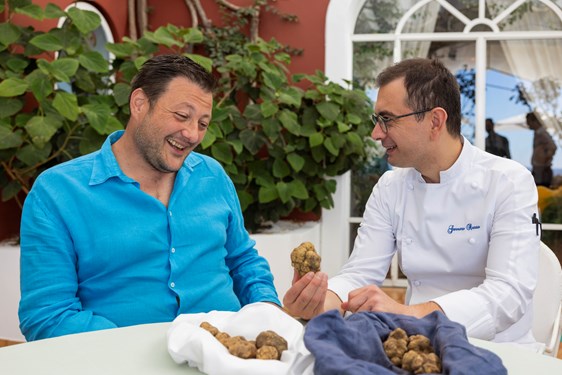
View
The truffles are soon wrapped up once more and taken to the kitchens, where they will later be served – on pasta perhaps, or risotto, or scrambled egg – to guests of La Sponda. White truffles, Gennaro tells us, can maintain their fragrance for three or four days if carefully conserved, wrapped in a clean cloth in a sealed container in the fridge, and handled as little as possible. Just before serving, they should be cleaned with a special truffle brush – never in water – then grated in wafer thin slices or shards.
Gerardo, meanwhile, is off to check the woods where he recently uncovered 36 kilos (80lb) of black summer truffles. The landowner has cottoned onto the fact that his swathe of woodland is particularly rich in truffles – so Gerardo is about to sign a rental contract with him. “It’s not cheap”, the tartufaio muses, “but I’ve never seen such an amazing place for black truffles”.
Photos © Roberto Salomone
Le Sirenuse Newsletter
Stay up to date
Sign up to our newsletter for regular updates on Amalfi Coast stories, events, recipes and glorious sunsets
